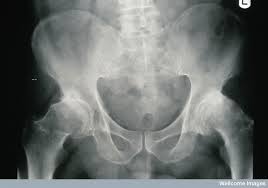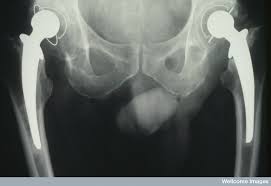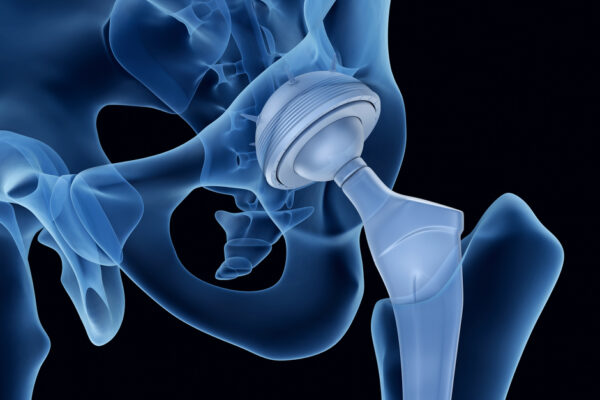Hip replacement is one of the most commonly performed joint replacement operations.
Adults of any age between can be considered but the most typical age is 60-80 years old. In those under 60 the non-cemented type may be the best option to allow for further surgery more easily in the future. The artificial hip is designed to last at least 15 years and more likely 20 years.
When hip replacement surgeries were first performed in the early 1970s, it was thought that the average artificial joint would last approximately 10 years.
We now know that about 85% of the hip joint implants will last 20 years.
Improvements in surgical technique and artificial joint materials should make these implants last even longer. If the joint does become damaged, surgery to repair it can be successful but is more complicated than the original procedure.
When is it needed?
When the pain from the worn hip affects mobility and when the pain becomes unmanageable. and after all methods of conservative treatments such as physiotherapy and injection no longer working. When day to day living becomes too hard and painful
The most common reasons are
1. Osteoarthritis
2. Hip Fracture
3. Other forms of arthritis such as Rheumatoid arthritis
How is the surgery done?
Hip replacement surgery is a procedure in which a doctor surgically removes a painful hip joint with arthritis and replaces it with an artificial joint often made from metal and plastic components.
It usually is done when all other treatment options have failed to provide adequate pain relief. The procedure should relieve a painful hip joint, making walking easier.


Hip replacement surgery can be performed traditionally or by using what is considered a minimally-invasive technique. The main difference between the two procedures is the size of the incision.
During standard hip replacement surgery you are given general anaesthesia and increasingly it is performed with spinal anaesthetic with light sedation. This is generally considered a safer option for older people.
The surgeon will then make a cut along the side of the hip and move the muscles connected to the top of the thighbone to expose the hip joint. The ball portion of the joint is removed by cutting the thighbone and the artificial joint is attached to the thighbone using either cement or a special material that allows the remaining bone to attach to the new joint.
The surgeon then prepares the surface of the socket removing any damaged cartilage and then attaches the replacement socket. The hip is put back into place and then the muscles are re-attached .
While most hip replacement surgeries today are performed using the standard technique (one 8 to 10 inch cut along the side of the hip), in recent years, some doctors have been using a minimally-invasive technique. In this method doctors make one to two cuts from 2 to 5 inches long. The same procedure is performed through these small cuts as with standard hip replacement surgery. This method was designed to lessen the pain, blood loss, speed healing and leave a neater scar.
If this method is chosen it is important that the surgeon is highly skilled in this technique. Research has shown the outcomes with minimally-invasive approach may be worse than with standard hip replacement surgery if done by a doctor who is not very experienced with this technique.
There can be some blood loss during hip replacement surgery so you may need a blood transfusion. You may want to consider donating your own blood before the procedure.

What is Hip Resurfacing?
This is an alternative type of surgery to hip replacement which involves removing the damaged surfaces of the bones inside the hip joint and replacing them with a metal surface. For young active patients, metal hip resurfacing already lasts longer than total hip replacement.
An advantage to this approach is that it removes less bone and is therefore easier to re-operate in later life. This is often the procedure of choice for fitter and younger patients and people wanting to return to professional sport. However unfortunately until recently this was not suitable for female patients as the metal implant does not fit their hips bones properly leading to higher failure rates. As a result, less women can have this type of surgery.
There is now a new trial at Imperial/Charing Cross Hospital treating patients with a new type of ceramic hip resurfacing implant the first of its kind. Early results suggest patients can return to physical activities such as swimming and cycling within six weeks of their operation.
The clinical trial is designed to show that the ceramic implant is suitable for both men and women, as conventional hip resurfacing techniques are currently unsuitable for some female patients.
There is hope that the new device, called ‘H1’, could also reduce the risks of hip surgery, as well as save the NHS £10m a year. The technique may also give patients a higher quality of life than conventional hip replacement surgery.
Unlike other hip resurfacing, the H1 implant is made of ceramic that is strong, low wearing and non-toxic. The researchers believe that by swapping the metal material with ceramic, the advantages of hip resurfacing surgery are kept, while the possibility of problems arising from the metal ions released is removed.
After Surgery
You will usually be in hospital for around three to five days, depending on the progress you make and what type of surgery you have.
If you are generally fit and well, the surgeon may suggest an enhanced recovery programme, where you start walking on the day of the operation and are discharged within one to three days. This is becoming more and more common.
Physiotherapy usually begins the day after surgery.
See the following articles
An interview with a hip surgeon.
Knee replacement-What to expect Film
Hip Replacement- Exercises Post Op


Is Hip Replacement Surgery Safe?
Hip replacements surgery has been performed for years and surgical techniques are being improved all the time. As with any surgery, however, there are risks. Since you will not be able to move around much at first, blood clots are a particular concern. Your doctor will give you blood thinners to help prevent blood clots from occurring. Infection and bleeding are also possible, as are risks associated with using general anaesthesia(you may be advised to have spinal anaesthesia for this reason)
Other less common concerns that you and your doctor must watch out for are:
- Your legs may not be of equal length after the surgery.
- You must be careful not to cross your legs or sit too low to avoid dislocation of the joint before all the muscles have healed and regained full strength.
Your surgeon will discuss the risks before undergoing the operation. Before you go into hospital, find out as much as you can about what is involved in your operation and the type of prosthesis that will be used.
Stay as active as you can and strengthen the muscles around your hip before surgery as this will aid your recovery. If possible, continue to take gentle exercise, such as walking and swimming, in the weeks and months before your operation.



